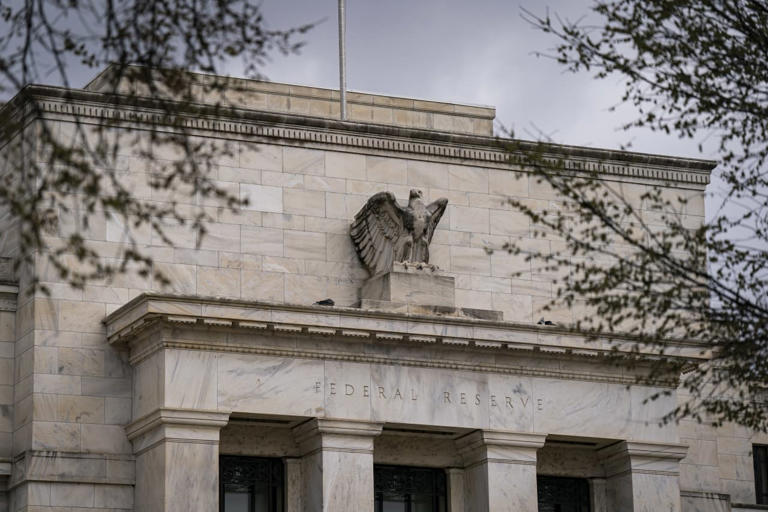The Federal Reserve’s current approach to monetary policy reflects a nuanced and cautious stance, shaped by the unpredictable economic conditions that have characterized the post-pandemic recovery. Unlike previous periods where the Fed provided more definitive forecasts, policymakers are now acknowledging the wide range of potential outcomes ahead and the corresponding uncertainty in their projections.
Central to the Fed’s deliberations are scenarios that could unfold for the U.S. labor market and inflation dynamics through the latter half of 2024. These scenarios vary widely and dictate different potential responses from monetary policy. One scenario paints a picture of inflation gradually moderating alongside a resilient labor market, which could allow for a gradual easing of the Fed’s tight monetary policy stance. This scenario, often referred to as a “soft landing,” would potentially involve only one modest rate cut of a quarter-point this year, aimed at supporting continued economic growth without risking a resurgence in inflationary pressures.
Conversely, another scenario presents a more challenging economic environment characterized by a sharper economic slowdown. In this case, if unemployment were to rise unexpectedly, the Fed might consider more aggressive measures, possibly including two or more rate cuts to stimulate economic activity and bolster employment.
A third scenario envisions a scenario where inflation remains persistently high and economic growth continues robustly. In such a scenario, the Fed would likely maintain higher interest rates for a prolonged period or even consider returning to a tightening cycle with potential rate hikes. This approach would aim to prevent inflation from becoming entrenched while sustaining healthy economic expansion.
Mary Daly, President of the San Francisco Fed, emphasized the importance of flexibility and responsiveness in policymaking during uncertain times. She noted that rather than adhering to predefined paths, the Fed’s policy decisions should be contingent upon evolving economic data and potential scenarios. This adaptive strategy allows the Fed to navigate unforeseen developments effectively and adjust policies as needed to achieve its dual mandate of price stability and maximum sustainable employment.
Philadelphia Fed President Patrick Harker echoed this sentiment, highlighting the volatile nature of recent economic data as “choppy.” This volatility underscores the challenges in predicting economic trends with precision and reinforces the need for a data-dependent approach.
Since July 2023, the Federal Open Market Committee (FOMC) has maintained the federal-funds rate target between 5.25% to 5.50%. Inflationary pressures, which saw a notable slowdown in late 2023 but have since stabilized, and the labor market, which has cooled from its peak but remains historically tight, are key factors influencing the Fed’s policy decisions.
Looking ahead, the FOMC’s next significant meeting in September 2024 will be pivotal. It will coincide with the release of several months’ worth of crucial economic indicators, including employment figures, inflation data, and overall economic growth. Market expectations currently suggest a likelihood of a quarter-point rate cut by September, although this outlook is subject to change based on incoming data and economic developments.
In conclusion, the Federal Reserve’s current policy approach underscores its commitment to navigating the complex economic landscape with caution and adaptability. By evaluating various scenarios and remaining responsive to evolving data, the Fed aims to steer the U.S. economy toward sustainable growth while maintaining price stability—a balancing act crucial for fostering long-term economic stability and resilience.
